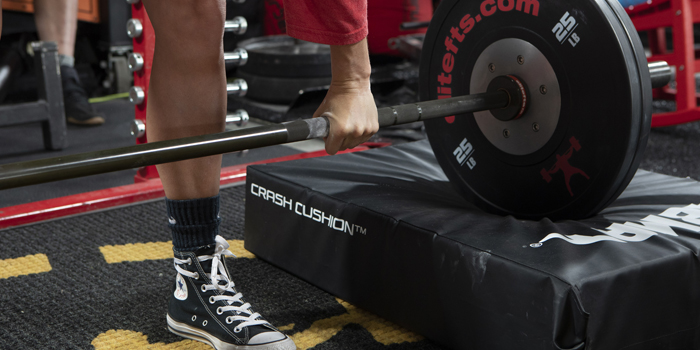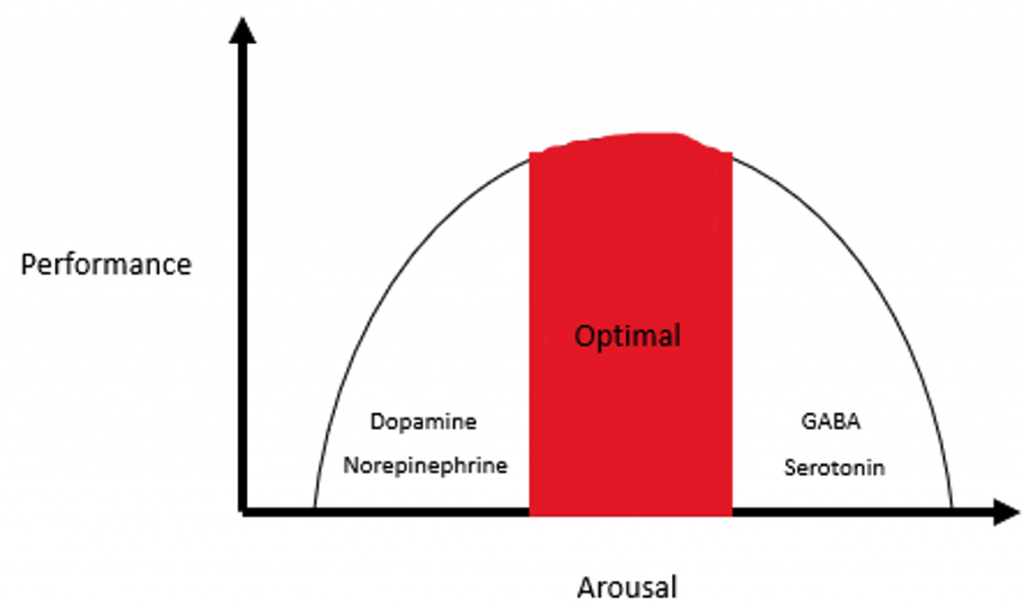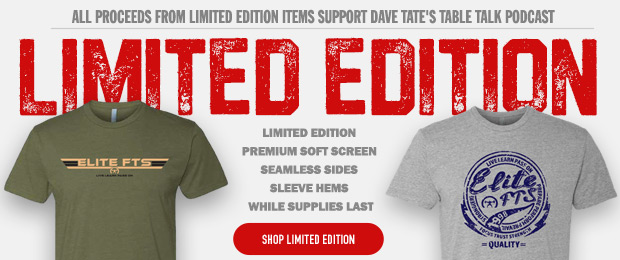
Training the morning of a game or competition may seem strange to many, but it's a hidden gem for increasing athletic performance.
Well, for SOME athletes (I'll explain soon).
Post-activation performance enhancement (PAPE; not PAP) is the performance increase seen after performing a "conditioning" activity or exercise. For example, sprint speed can be increased hours after doing heavy back squats [1].
However, the literature is very divided regarding the effectiveness of PAPE on increasing performance. Does it work, or does it negatively affect performance? What intensity should be used (high vs. medium vs. low)? Many different variables are at play, but what many studies do conclude is that PAPE's effectiveness is greatly dependent on the individual [2-4].
I believe the strength and conditioning community doesn't talk much about the utilization of pre-competition training because of this variability. It can work wonders for some people, and it may ruin their performance for others.
RECENT: A Guide to Twice-Daily Training
Currently, the risk-to-benefit ratio isn't clear enough and may "scare" coaches, so they decide not to try it, which is completely understandable! Especially if you're working with professional athletes whose livelihood depends on how well they perform. Yet, imagine the performance gains being left on the table if they are a responder to pre-game training, and you could potentially know whether or not they are a responder without trial-and-error.
Pre-Game Training For Me
I'll start by giving my personal experience with pre-game training. During my days as a hockey player, I almost always trained on the morning of a game. Granted, I was training two to three times per week during the season, so my level of general physical preparedness was high, and I could recover right before the game. I always noticed a significant improvement in how I felt on the ice if I could train in the morning.
Although this worked for me, I had many teammates who (I kid you not) would be in bed all day until game time, only getting up for breakfast and pre-game meals, and still perform very well.
Had I done that, I would feel like I was dragging my feet through mud. For them, it worked.
Why the huge difference in pre-game preparation?
The answer is baseline psychological arousal levels.
Psychological Arousal Levels
Psychological arousal levels are often related to an individual's temperament and personality.
The principle of individuality is greatly influenced by an athlete's personality type or temperament. Anatoliy Bondarchuk and Henk Kraaijenhof (author of the book What We Need is Speed – Scientific Practice of Getting Fast) both refer to the role of an athlete's "nervous system type" (aka temperament) has on an individual athlete's athletic preparation.
They mention the four temperaments characterized by the Greek philosopher Hippocrates: melancholic, sanguine, choleric, and phlegmatic. Each type responds differently to stressors (different nervous system strengths), affecting how each type adapts to certain training variables.
Some can handle pressure or stress very well, while others perceive it as too great and fall apart. For example, a weaker nervous system would not be able to tolerate large amounts of high-intensity work because the stress is too great to recover from.
Charles Poliquin
Charles Poliquin then came along and talked about the influence an athlete's neurotransmitter profile has on how they should train, referring to what kind of training each neurotransmitter dominance (dopamine, acetylcholine, serotonin, GABA) is motivated by and what they can recover from. This was largely based on the Braverman Test (by Dr. Eric Braverman) and the five elements (wood, fire, earth, water, and metal).
Christian Thibaudeau
Christian Thibaudeau took it even further and developed the Neurotyping System. It's a detailed and complete classification of athletes based on their neurotransmitter profiles. According to the system, different neurotypes are best suited for certain training styles (check out the last article I wrote to learn more: Is Personality an Indicator of Your Training Style?). An athlete's nervous system and brain chemistry play a significant role in their approach to athletic preparation.
Charlie Francis
The greatest example I know of that demonstrates this concept is how Charlie Francis manipulated his athlete's muscle tone for the main race. Some athletes had greater tone and needed massage to bring it down, while others needed more stimulation and would run harder in the following heats.
Personality Type
How does personality type play into pre-competition training?
It all concerns the athlete's baseline arousal levels and nervous system activation. I go a little more in depth on the subject in my previous article, but to summarize, different personality types are located on different points along the Performance-Arousal Curve. According to Dr. Robert Cloninger, Dr. Eric Braverman, and the work by Howell's et al [5], those characterized as "Dopamine" or "Norepinephrine" dominant are on the left side (hypo-aroused), while "GABA" or "Serotonin" personalities are on the right side (hyper-aroused).
To perform optimally, an athlete needs to balance arousal (sympathetic) and relaxation (parasympathetic) to achieve a certain arousal level, which will differ for each athlete.
This is where pre-game training comes in handy. It is a potential tool used to stimulate the nervous system of an athlete with low arousal levels to have them shift toward the optimal range of arousal. However, it may also be detrimental to an athlete who's located on the right side of the curve.
How to Determine if Your Athletes Should Train Before a Game
Here's how you may determine whether or not an athlete will benefit from pre-game training.
I want this information to be helpful, so I will keep it basic and cheap. Ask your athletes to complete the Braverman Test (it's free and online). Based on their neurotransmitter-dominant personality, the test hints towards what side of the arousal curve they sit on. Remember, it doesn't provide the whole picture of their brain chemistry, nor the athlete's stress and activation levels at that specific moment.
Here are my recommendations for the different neurotransmitter profiles:
Dopamine and Acetylcholine Dominant Athletes
Dopamine and Acetylcholine dominant athletes are more likely to benefit from pre-competition training because they tend to have low levels of arousal at rest and thrive off stimulation and intense activity.
The pre-competition training provides them with the necessary stress to get them to that optimal range of arousal. Both tend to enjoy high-intensity work, such as heavy-light complexes, heavy partials, or explosive movements. A major difference between the two types is their level of self-awareness or auto-regulation.
Dopamine types are VERY intense and motivated. They may push things too far because they "feel good." Acetylcholine types are more intuitive and reflective of how they feel, making them more likely to make adjustments to prevent getting too tired. As a strength and conditioning coach, this is important because more attention needs to be paid to a Dopamine type to prevent fatigue accumulation to the point fatigue is greater than potentiation (thus decreasing performance).
Note: The Braverman Test does not include a Norepinephrine dominance, but the Dopamine dominance is very similar due to the close relationship Dopamine and Norepinephrine have (dopamine being a precursor to norepinephrine).
Serotonin and GABA Dominant Athletes
Serotonin and GABA dominant athletes (inhibitory neurotransmitters but with very different personality types) would not respond very well to pre-competition training. They already tend to have high levels of arousal, and any further push to the right along the arousal curve will only decrease their performance.
From experience, the Serotonin type tends to be the playmaker of the team and needs to feel "loose" before games. They are the athletes that lay in bed most of the day and like to play around before games. Performing something intense close to the competition may make them tense and overstimulated. I believe these athletes subconsciously know this, and is why they are typically seen dancing or fooling around before competition.
On the other hand, the GABA types are the complete opposite. They are extremely rigid and structured. Therefore most stimulation will just make them even tenser. My suggestion is to let the Serotonin types be free and do their own thing without them doing something dumb. The GABA types would benefit greatly from para-sympathetic work such as deep breath work, meditation, visualization, and foam rolling.
As a cautionary note, GABA types are very structured and orderly, so they tend to already have pre-competition routines. The worst thing you can do is take them out of their routine and stress them (I can attest to this— don't bother a hockey goalie while they are getting ready for a game).

In conjunction with personality testing and observation, other useful tools can be used. Track heart-rate variability to check the balance between sympathetic (fight-or-flight) and parasympathetic (rest-and-digest) activity. Measure hand grip strength or vertical jump height to gauge CNS recovery. For a more detailed athlete classification than the Braverman Test, you can use the Neurotyping questionnaire by Christian Thibaudeau. It includes both excitatory dominance (what drives us), as well as an inhibitory dominance (how well we come back down). These markers are critical for gauging an athlete's ability to recover from stress.
WARNING: These assessments are simply tools and should not be used to make blanket statements like, "Oh, he's Dopamine dominant, so he needs to train before games." As a coach, it's also your job to know your athlete well enough to figure out where he typically lies on the Performance-Arousal curve. It's my opinion that there is no one test out there that can precisely characterize someone. We're getting close, but it's more complex than what we currently know.
Pre-Competition Training Session Design
When designing the training session, Lee Haney's quote "Stimulate, don't annihilate" should be the mantra. The pre-competition training sessions are NOT meant to cause an adaptation. Moreso, they shouldn't be periodized or pushed hard. The goal is to STIMULATE (wake up, prime, whatever you want to call it) the nervous system.
Some of my favorite methods are heavy-light complexes (ex. back squat with squat jump), dynamic effort work, jumps or bounding, and explosive medicine ball work. I always prefer using exercises that are either simple to perform or are my favorite/best lifts because that way, there's no need to worry about technique. The amount of work greatly depends on how the athlete feels heading into the session and how they feel and look during the session. For example, longer ground contact times or a decrease in bar speed are signs of fatigue. In this case, the session should be stopped.
Again, WE ARE NOT LOOKING FOR AN ADAPTATION, just simply trying to get the body and brain primed for competition.
Here's pretty much what I did every weekend during my hockey career. I found out later I have a Dopamine dominant personality):
| Friday 10AM – Game @ 7PM | Saturday 10AM – Game @ 7PM *Fatigue high from previous game |
| Dynamic Warm Up Medicine Ball Throws & Abs (2-3 sets) Heavy Barbell Pin Squat – Mid Range – Bands 3-5 sets x 3-5 reps (RPE @8) & Jump Variation (Lateral Hops, Box Jump, etc.) 3-5 sets x 4-6 reps 3-4 minutes of rest between sets Optional: 2-3 sets of DB Presses and Rows/Chin Ups | Dynamic Warm-up Medicine Ball Throws & Abs (2-3 sets) Box Jumps (Weighted or Unweighted) 3-5 sets x 3-5 reps 60 seconds rest between sets Trap Bar Deadlift vs. Bands – Dynamic Effort 6-9 sets x 3 reps 60-90 seconds rest between sets *Weight based on feel (very explosive) Foam Roll/Breath Work/Mobility |
Final Note
I use the word "potentially" or "may" in this text because there is no current research looking at the relationship between personality types and pre-game training. I'm hoping to change that very soon with my research. But, like most things in the strength and conditioning field, we can't wait for research to come out. The evidence is clear, and I've witnessed it firsthand.
If we go back to the work of Charlie Francis and how he managed his athlete's muscle tone (often from levels of arousal from previous runs), it explains it all. Too much muscle tone (too high of an intensity; hyper-arousal) required some massage to relax the tissues, whereas if the muscle tone was not high enough, a form of arousal or stress was needed.
It's all about determining what each athlete needs to perform at their best.
References
- Lagrange, S., et al., Contrast Training Generates Post-Activation Potentiation and Improves Repeated Sprint Ability in Elite Ice Hockey Players. Int J Exerc Sci, 2020. 13(6): p. 183-196.
- Sale, D.G., Postactivation potentiation: role in human performance. Exerc Sport Sci Rev, 2002. 30(3): p. 138-43.
- Golas, A., et al., Optimizing post activation potentiation for explosive activities in competitive sports. J Hum Kinet, 2016. 52: p. 95-106.
- Batista, M.A., et al., Influence of strength training background on postactivation potentiation response. J Strength Cond Res, 2011. 25(9): p. 2496-502.
- Howells, F.M., D.J. Stein, and V.A. Russell, Synergistic tonic and phasic activity of the locus coeruleus norepinephrine (LC-NE) arousal system is required for optimal attentional performance. Metab Brain Dis, 2012. 27(3): p. 267-74.

Max Daigle is a strength and conditioning coach working with elite-level athletes at Axxeleration Performance Center in Montreal, Canada. After completing his bachelor's degree in physiology, he is pursuing a master's degree in exercise science from McGill University.









